Nissa’s Christmas Mole (& Tamales)
DECEMBER 20TH 2022
I make really good moles, and I don’t think it’s because of my connection to Latin America. Despite the fact that I learned a lot of my bold and wild flavors there beginning at 10 years old. I think it’s because, as a cook, I embody what a mole really is: a melting pot of ideas and concepts that continuously evolve. Mole has no real recipe, no real beginning, and no real ending. I cook, like a mole is; so its not surprising that I accel at mole making.
Technically first mole was a Cherry & Duck Mole for a special Taco Party event at my old cooking school in Brooklyn. From there I went on to create such masterpieces as my Chicken & Pumpkin Mole and my Passion Fruit Pork Mole, which came to be while I lived in Ecuador where passion fruit practically dropped from the sky. That recipe is also where I came to use carrots as a source of natural sweetness and also thickening agent. Moles generally use a myriad of ingredients as thickeners and I have learned to use all kinds of things in lieu of tortillas and bread, fruits and vegetables mainly. I have even been known to make mole cocktails, like my Cherry Mole Manhattan recipe I made for a fancy NYC holiday party.
The mole-making process delivers immense pleasure for me, from the initial concept stage to the long slow methodical process’ and techniques it employs. Mole reminds me of the importance of openness in cooking and that even in cooking that is considered traditional and culturally specific, diversity is constantly unfolding into the final rendition of the dish.
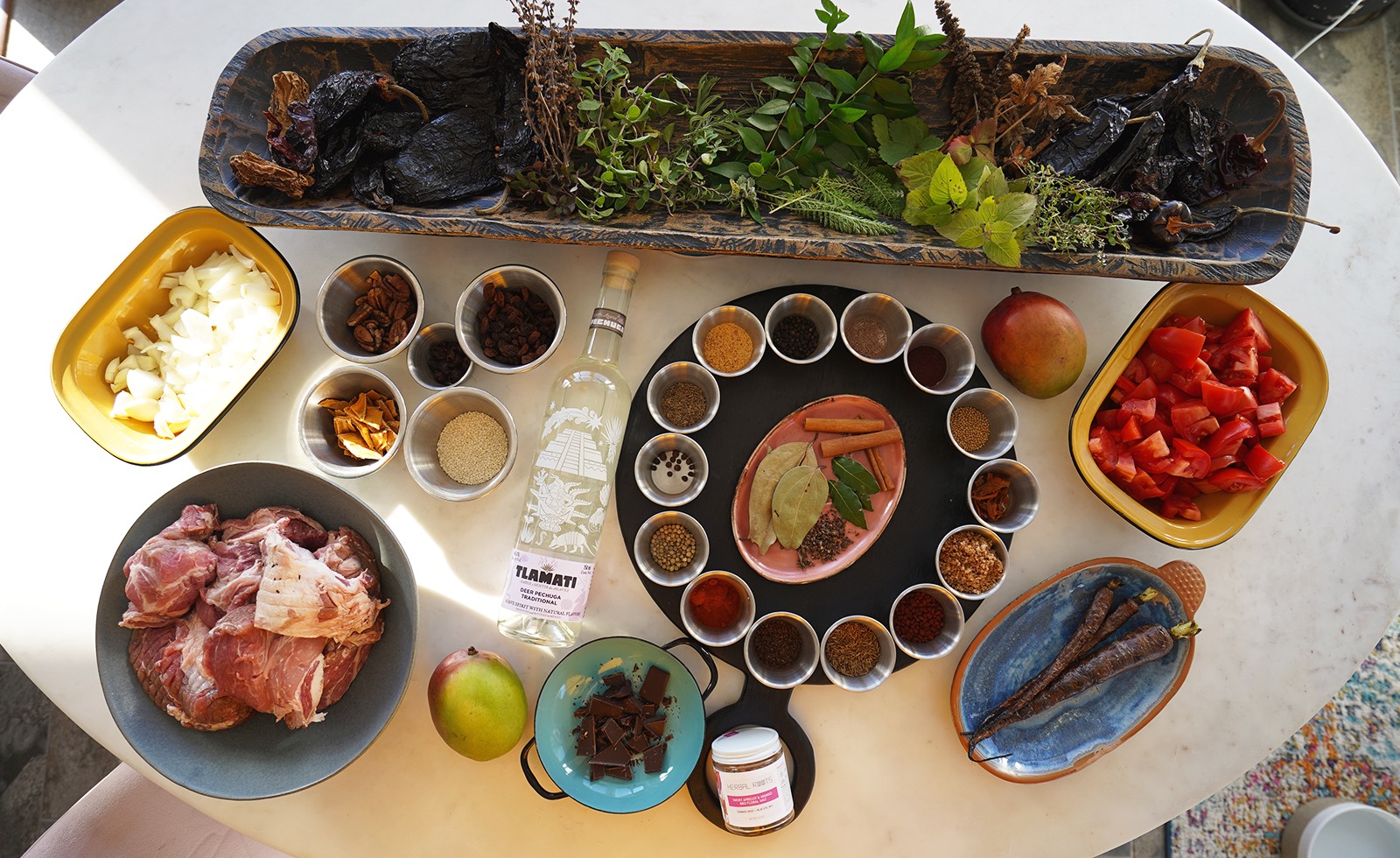
No other dish celebrates and delivers the diversity (and complexity) of Mexico quite like a mole. (Perhaps Mezcal Pechuga, which you can read about on my mango blog – Under The Mango Tree.) Not only is mole often served at important celebrations and holidays throughout Mexico, but it’s also typical at Christmas, which is why I am busting it out now.
A mole captures a unique story and represents the perfect combination of everything past, present, and future. My Mango Pork Mole Tamales are the perfect Christmas and New Year’s celebratory food. They represent me and all my complexity and remind me that everything is in motion, always. My mango mole also pays special tribute to the start of the Mexican mango season which commences with Oaxaca, which happens to also be known for its moles.
Depending on the interpretation of the original Nahuatl word mulli, mole means mix, mixture or sauce. Nahuatl is the language of the Aztecs and the Toltecs and is the most widely spoken indigenous language in Mexico today with over 1.4 million speakers, of which an estimated 200,000 do not speak any other language.
Mole’s history is complex and a little contentious, just like the recipes and interpretations themselves, but what is true is that some original form of the dish was made during pre-Hispanic Mexico by the Aztecs and it’s likely that these “original” renditions of the dish were made with cacao and maize, as they still are today.
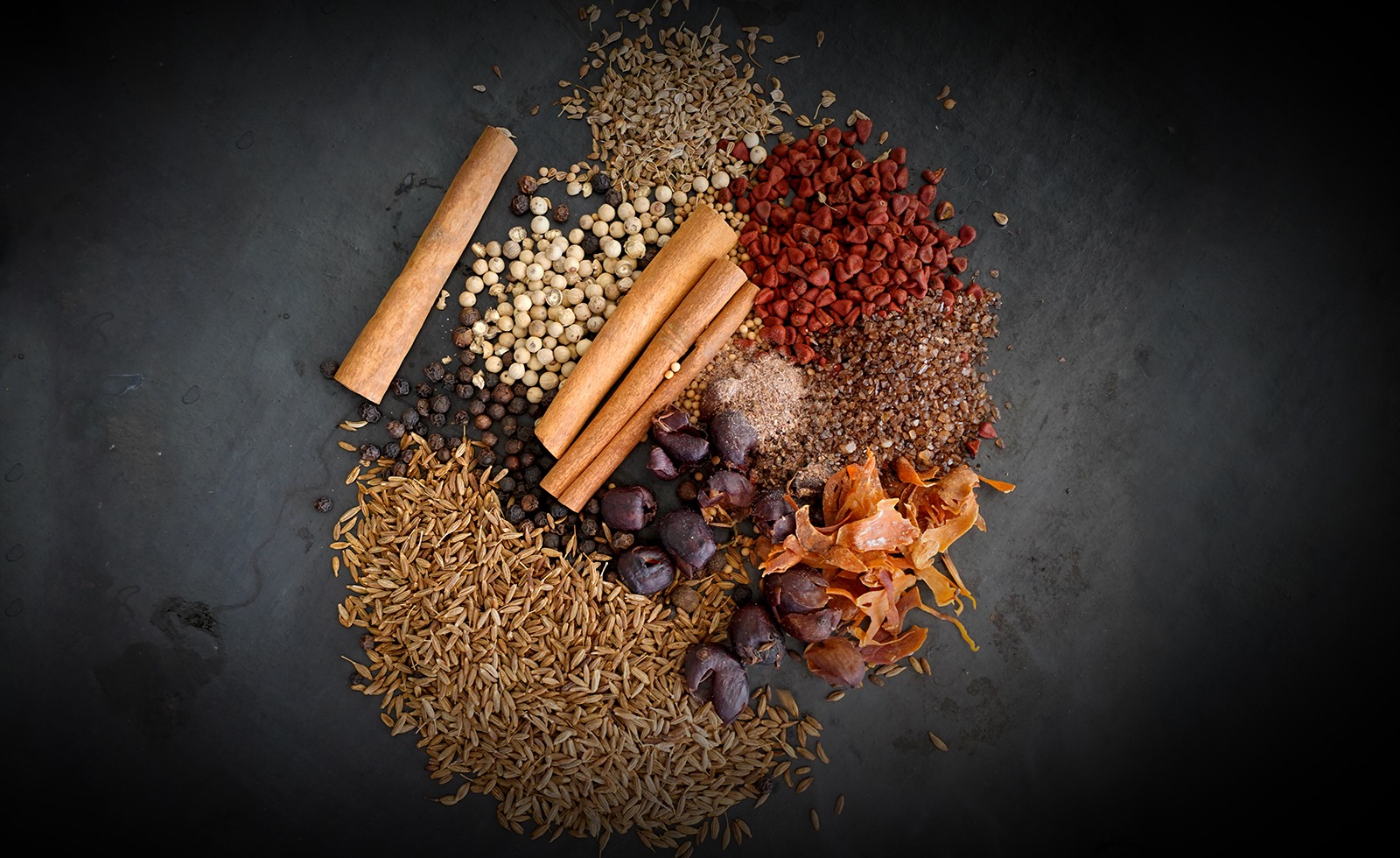
The mixture interpretation of the word seems more accurate to me in describing mole, as it exemplifies the mestizaje aspect of the dish and Mexico. Mole exemplifies the constantly evolving multicultural consciousness of Mexico and the history of “mixing” or blending. Mexico’s diversity is much like mole: it’s “never finished”.
The mestizaje of mole morphed into what it is today when indigenous ingredients collided with the nuts, breads, spices and exotic fruits from far off places that the conquistadors brought with them during colonization. This isn’t just a collision of ingredients, it’s also a collision of ideas, cooking techniques, and even cooking vessels, as well as the intricacies of palette preferences. For me, mole is an ever-evolving recipe, and this concept represents how I learned to cook and what I have seen repeatedly in dish after dish in the various kitchens I’ve been lucky enough to be invited into throughout the world. I feel at home making moles, in this conceptual way of cooking.
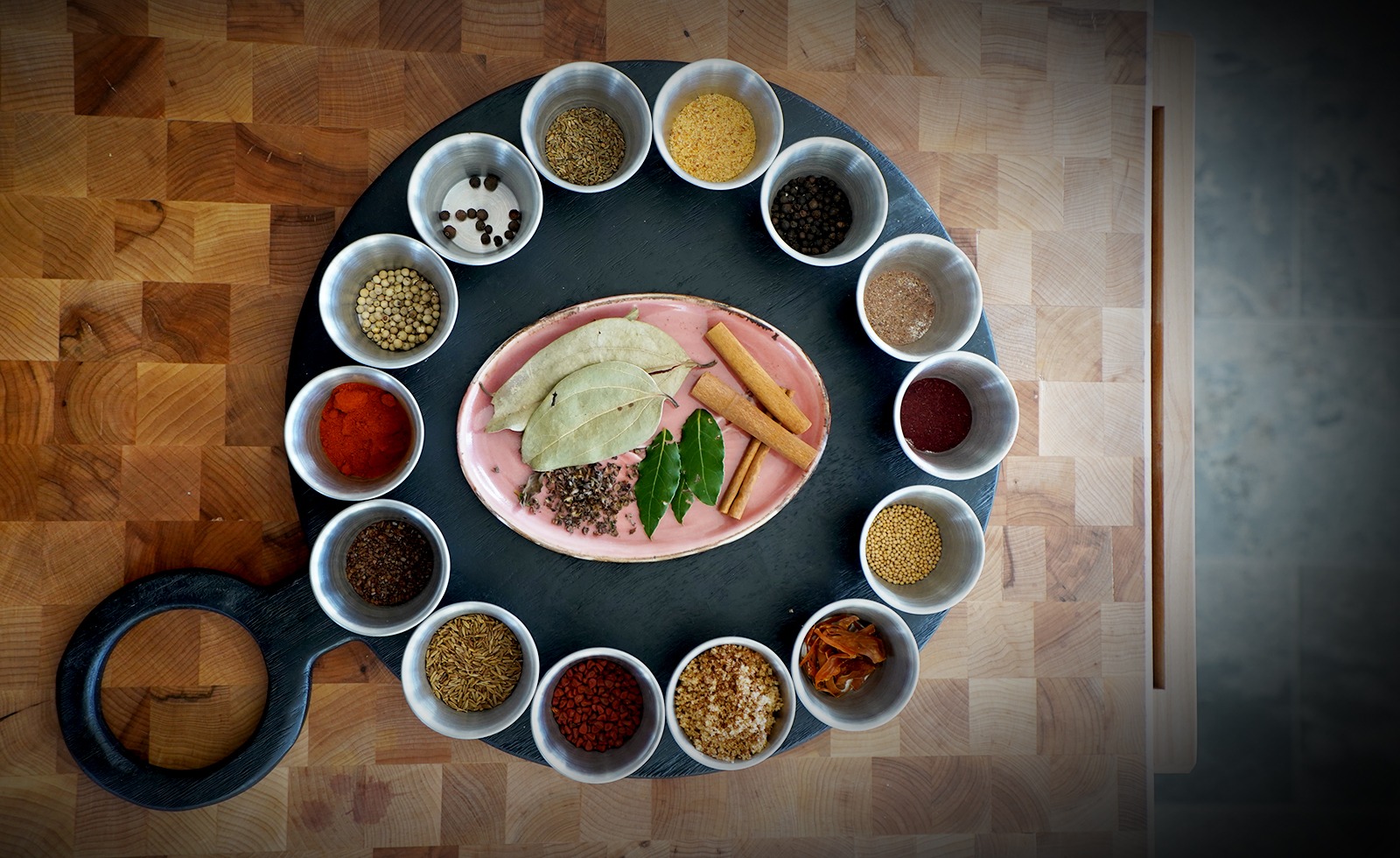
I remember vividly an Eater article from several years back. It was called “Mole Is a Dish That’s Never Truly Done”. The title struck me and the article nailed my sentiment about moles and, for that matter, many indigenous and traditional recipe concepts that so many industry cooks and chefs adamantly believe can only be made one exact way. In a mole there is no one way or one final flavor. There is only the experience of what is around you and what you make of it. Past, present, and future all included in the moment.
Oaxaca is famous for its seven moles (los siete moles de Oaxaca): supposedly one for every region in Oaxaca, but I think there are technically 8 regions, so now with my Mango Mole we are on track! All these moles (or versions of) are the moles that are made all over Mexico and the world with significant discourse on regional “ownership” of each type.
All of the mole recipes we eat today, even in some of the most remote places in Mexico, are all renditions of recipes that come to be in post-colonial times, but there is a lot of influence that goes back way before the colonization period.
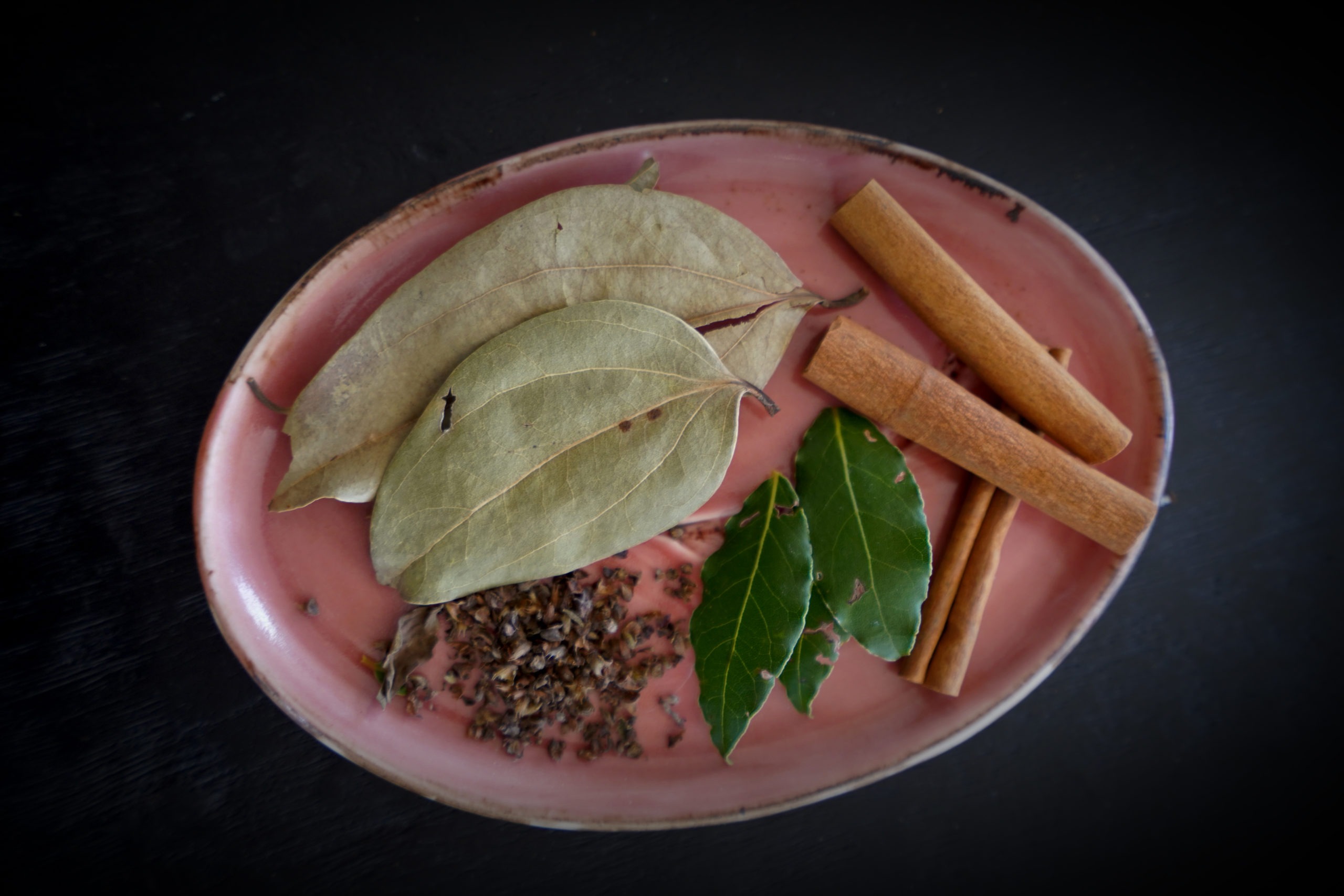
While in Egypt, I recently learned about medieval Islam and how it made its way from Baghdad to southern Spain and North Africa (also India) and eventually to Mexico, which is why many claim mole has a great deal of Islamic and North African Berber influence. I can taste that similarity, with different spice accents of course. There is a great article in the Atlantic, “The Colonial Origins of Mexico’s National Dish”, that highlights the history of mole and draws the connections between indigenous ingredients, old world supplies, Islamic cuisine and even a convent that just needed to whip a meal up quickly. The history is complex, like the recipe concepts themselves.
Most of the seven moles (even my Mango Mole) use post-colonial ingredients but there is no real standard as Jorge Leon (who I will get to in a bit) points out in the Eater article: “There isn’t a standardization. Everyone has their own definition.” But the “basics” people agree on, even I can agree with these basics.
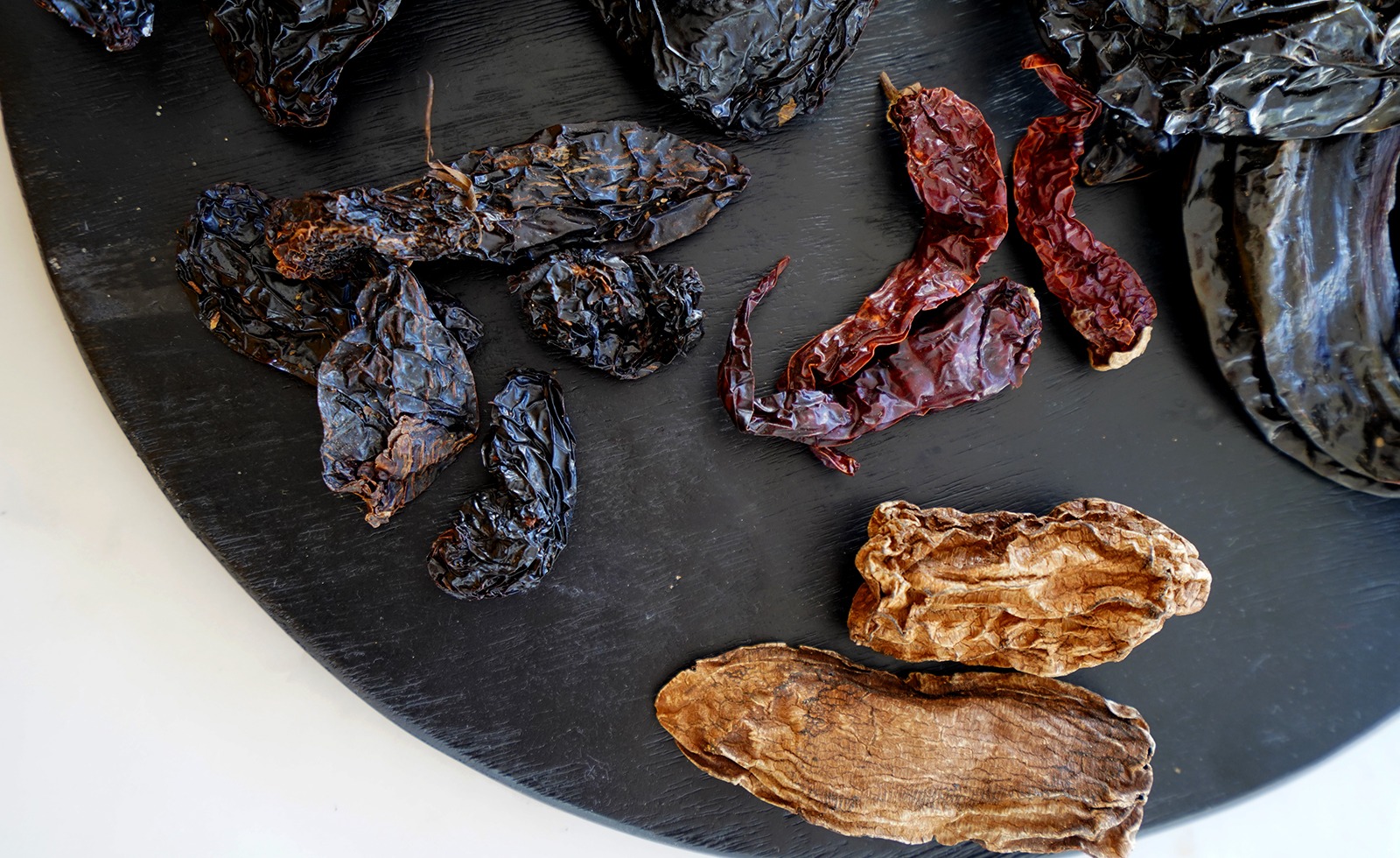
- Negro – This mole is a bit of everything. Sweet and savory and deep and rich. It’s one of the most intricate of all the moles because of the vast array of ingredients. It’s got several different types of dried chilies traditionally, including the chili negro. It’s a very dark mole (hence the name). The color comes from the dark chilies as well as a hefty amount of dark unsweetened (bitter) chocolate. The Hoja Santa plant also contributes to the deeper hue and complex sweet and savory flavor, it’s native to southern Mexico and Central America and has an anise, nutmeg, and sassafras flavor (think earthy peppery root beer). To me hoja santa tastes like Mole Negro.
- Amarillo – Technically more orange than yellow, this mole is super versatile and all savory. It’s made with several chili peppers like most moles, but the Chilhuacle Amarillo pepper is the main one. When the Chilhuacle pepper is just ripe, its bright yellow/orange, and it’s at that stage that it’s dried. The flavor is sweet and tart and citrusy with some smokiness. It’s got a tinge of bitterness to it and even a fair amount of acidity. It’s not super spicy. I love Mole Amarillo over seafood, which makes sense as it traditionally hails from the coastal region of Oaxaca.
- Coloradito – My Mango Mole starts with the same basics as a coloradito, which technically means a shade of red, loosely translates to a risqué color. It’s a red tomato-based mole that uses mostly ancho and guajillo chilies along with many/all/any of the other mole spices, nuts, and seeds. The guajillo chili is one of the most commonly used dried chilies in the world. Its rich red hue combines with the tomatoes and spices to create a beautiful deep red sauce. It has a medium to mild heat level and a rich chili flavor and soothing sweetness. The ancho chilies bring in fruity smokiness and the overall flavor is a complex fruit, smoky chili-forward sauce that’s not overly spicy, unless you add chilies for that!
- Verde – This one is rather self-explanatory and one of my all-time favorites and also comes with diverse ideas on how to make it. A few things are for sure: fresh tomatillos, jalapeños, cilantro, and pumpkin seeds. Most importantly (at least for me), the use of fresh herbs is essential. Many are native to the southern Oaxaca region and used widely in all Oaxacan cooking: hoja santa, epazote, yerba porosa, chiplin, avocado leaves, and Mexican oregano. I use lots of fresh herbs that are around me, the key is fresh greens of some kind, I think.
- Rojo (Mole Poblano) – This mole is similar to a black or negro mole only it uses less of the deeper dark chilies and more of the vibrant tart red chilies like the guajillo and pasilla. It’s a much more savory-forward mole. It not only uses less chocolate but usually sweetened chocolate aka Mexican chocolate. It’s got lots of the other usual suspects that the Mole Negro has – nuts, seeds, spices and dried fruits – depending on who is making it. Regardless, the end result is a smooth sweet, brown-red, spicy sauce that can be used for anything.
- Manchamantel – The name translates to “tablecloth stainer,” which should give you a clear picture of the deep vibrant color and rich flavors. It is the perfect combination of sweet, spicy, and fruity, with a fairly greasy quality to it thanks to the generous lard usage; although these days you find more versions with less lard. It is most often made with pineapple and sometimes pears. The fruit is key in a manchamantel mole. It’s often made by stewing a combination of pork and chicken and has a very fruit chorizo-like quality about it. It’s typically eaten ladled over rice with fresh tortillas. My Mango Mole is a little bit this style, because of the fruit use.
- Chichilo – This is a super unique mole. It’s incredibly dark thanks to two main factors. It’s main chili, the Chilhuacle Negro Chili, is a dark colored mild chili that’s dried at its ripest stage, when the blocky peppers are totally chocolate brown. A few of the ingredients are charred first – mainly the chilies and the avocado leaves, which bring a dark ash color to the mole. Strong dark spices, like cloves, all spice, and peppercorns highlight the mole and it’s traditionally made with beef and beef stock that turns into a deeply rich, slightly bitter (from the avocado leaves), smoky (from the charred items) mole sauce.
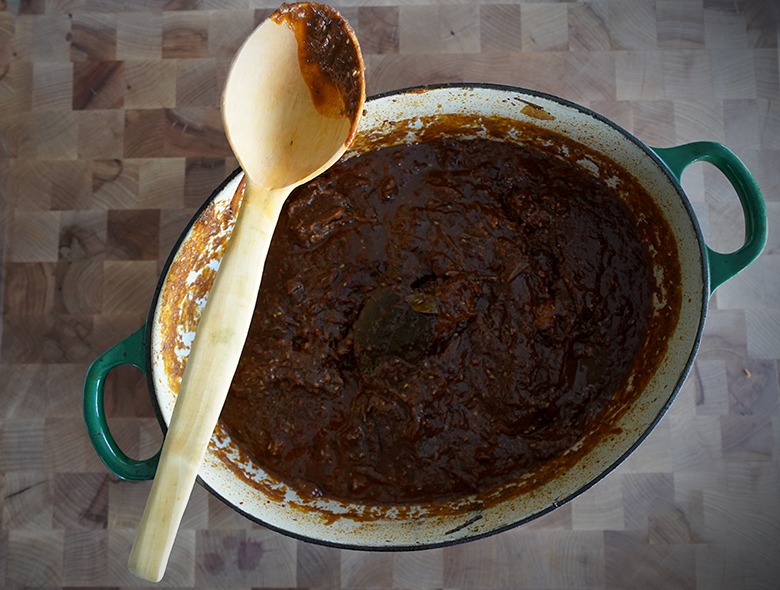
Most importantly, mole is subjective to the individual circumstances. In the Eater article, they quote Elvia León Hernández, who has a home-based restaurant outside of Oaxaca called Alfonsina. And if you have been anywhere in the remote southern regions of Mexico, you know these home-based restaurants are the best places to eat. “Through the smoke of the comal, the grinding of the metate, and the heat of the fire, everything becomes one.” That one line describes what I feel about cooking, creating food from what is not just around you in terms of the plants, nuts, seeds, and so on, but the knowledge you have, some of it ancestrally passed down, some of it by way of natural information flow (flowing fast these days) and some by intermingling with others who are different. “In restaurants, houses, and markets around Oaxaca, everyone makes their mole a little differently,” the article notes.
The article goes on to talk about how Elvia’s son, Jorge León, returned from years working in Mexico City, most notably for Enrique Olivera’s Pujol as well as Casa Oaxaca in Oaxaca. His return home shed light on another way that traditional recipes get transformed, improved, or even slightly altered through the simple process of the movement of people and what they bring with them.
Most moles in Mexico today use plenty of seeds and spices that were and even are foreign to Mexico. Likewise, many of them also still include indigenous plants and herbs that are foreign outside the various regions in Mexico and often impossible to get unless you are there. There is also, of course, the personal preference aspect, where we must consider that all people – cooks and eaters have to work around palettes sensitive to sweet, salty, spicy, and bitter. These slight variations can be seen throughout villages and by families throughout Mexico. This is why the line in the article (“Mole is a living, breathing document shaped by personal experiences and specific inspirations”) is so important. In my mind most recipes, especially the traditional ones, are just that.
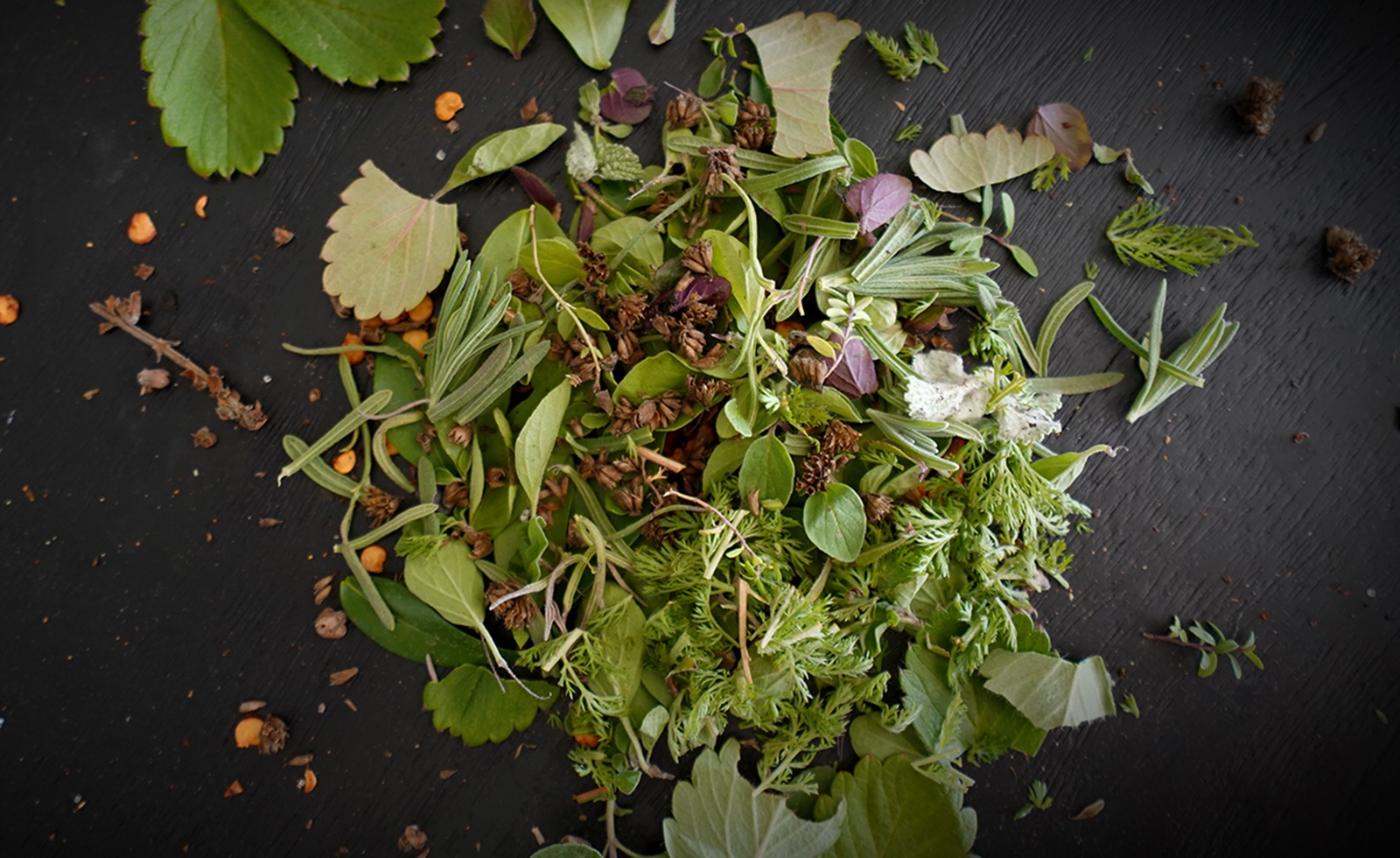
The variances from the geographical terrain, sometimes separated by only a few meters or a river or a mountain and the access to foreign ideas and ingredients over the years play big parts in mole ingredients and, thus, taste. The age of the clay pots and comals and the flavors embedded into them over the years, along with the type of wood used to heat them all, equally contribute magic flavor that just can’t be recreated. The metates battered with the chatter of the women grinding the various corn and dried chilies (dried in vastly different microclimates and techniques from village to village) yield their own flavors as they grind.
All of those small aspects we take for granted is why I have never been able to recreate my favorite childhood dish of my Nicaraguan days, gallo pintos. We ate them in small woodfired home restaurants like Elvia’s, always cooked over wood in old pots and pans. That flavor, the stuff imparted from that entire experience, is what I can’t recreate in my own US kitchen.
As someone who has never lived in one place long, someone who grew up partly in war-torn Nicaragua and went on to travel the globe for most my adult life, cooking and eating alongside locals in their kitchens, I’m not much of a traditionalist and I’d argue that most the folks of the world are not either. We make what we know with what we have. And that either changes often or it doesn’t. We also like what we like and that is both a personal and collective concept.
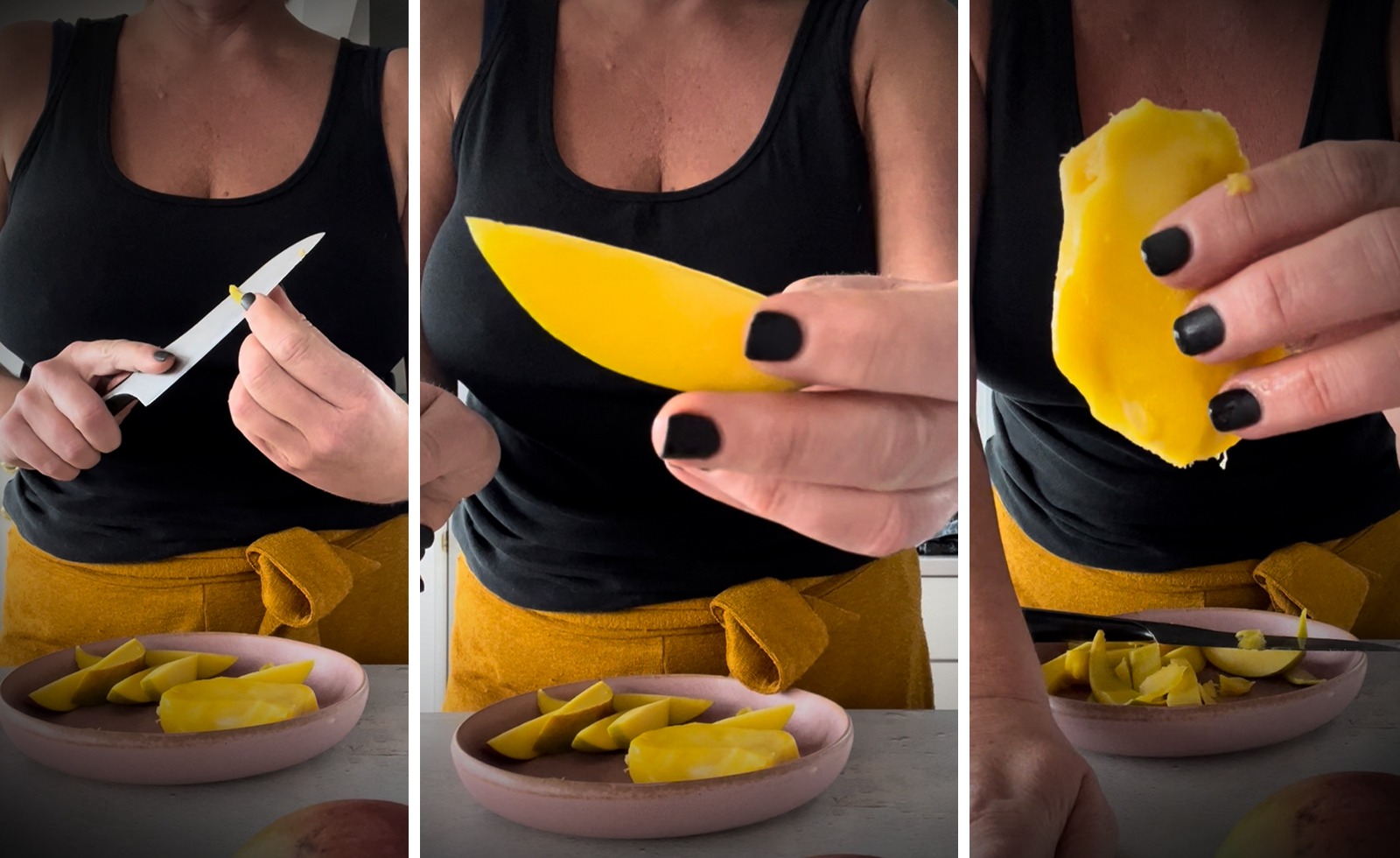
All of this so as to introduce one of my favorite mole recipes, a recipe I created in the work I do with Mexican mangoes. A recipe I’ve been working on for several years and am acutely aware that is neither done, nor will ever be made this exact way again.
My Mango & Pork Mole takes Oaxaca’s popular Mole Coloradito and transforms it into a spicy, smoky mango version. I used many of the same concepts that are used traditionally, but I shortcut some techniques because my kitchen is equipped to do so. I use traditional techniques and a molcajete sometimes because I like the feeling of grinding and pounding. I recently bought a comal and so I use that now instead of a cast iron pan for toasting chilies and spices. I use ingredients from all over the world because I am lucky enough to have access to those products and smart enough to choose sustainable and fairly traded options, since this is my area of expertise in my agricultural work. I use a lot of herbs because, well, that is my passion.
I think in the end my mango mole is the perfect representation of a mole and how they come to be and what they taste like. My mole, like my cooking, mixes up everything I have experienced with what I have around me and what I dream of. Sharing it with the world feels like sharing myself, which feels very much like Christmas spirit!
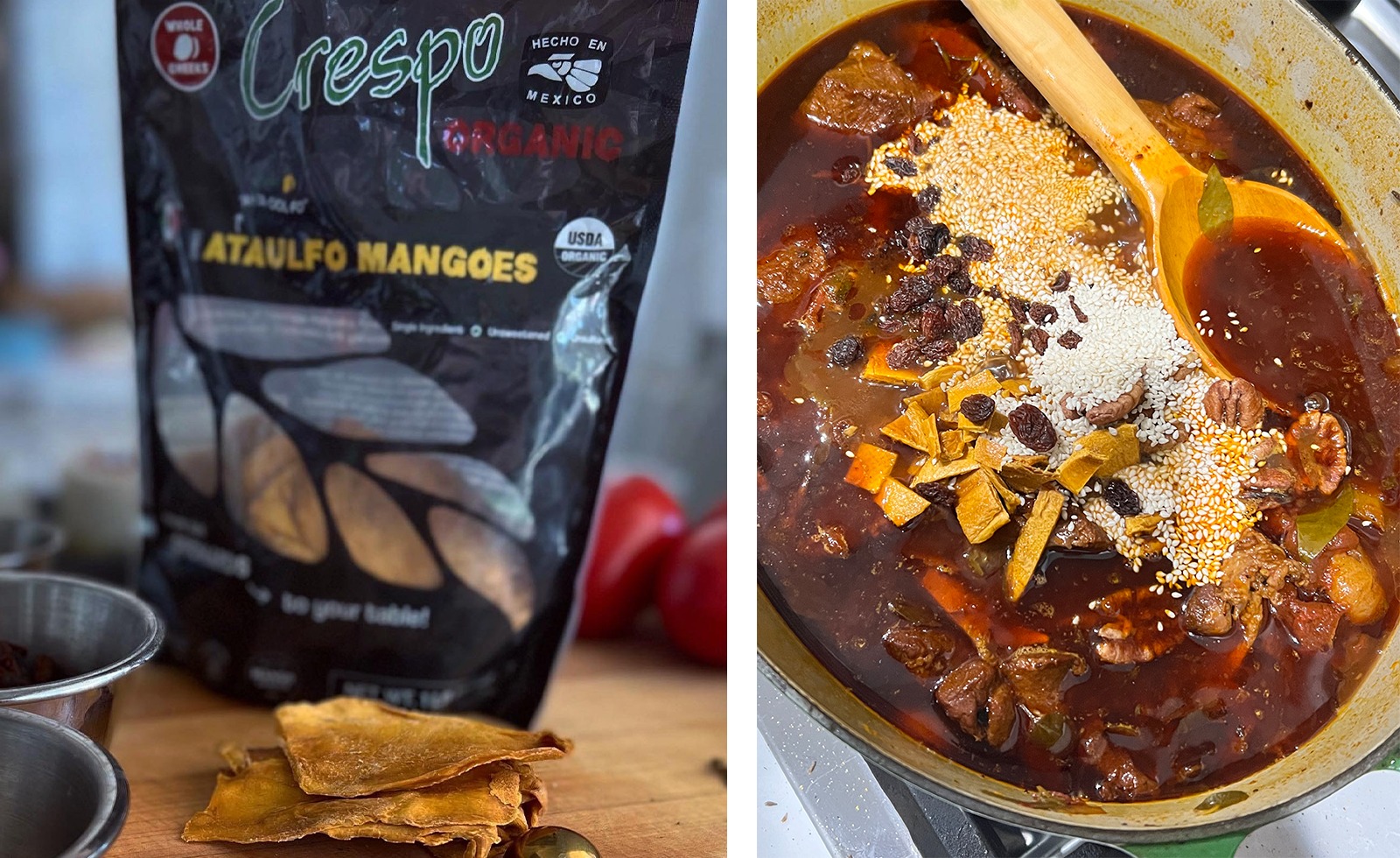
Mango Mole, Pork Tamales & Spicy Guajillo Mole Hot Sauce
Serves 10-12
My favorite way to eat mole is in a tamale. I love how the masa tames and showcases the spice and adds texture. My mango mole is a little sweeter than a “normal” mole coloradito, but I add more complexity to combat the swetness with herb use and spices and a few more smoky chilies. The sauce has a sweet and spicy, smoky tropical tone that pairs incredibly well with pork and the corn of the tamales.
My mango mole is a celebratory mole, like most moles are. It takes a lot of time to make, and that feels special both for me in terms of making it and the joy that is experienced when I get to share my flavors, techniques, and all that I am in a few little bites.
Use good quality masa. Masienda brand does an excellent job and promotes single-origin non-GMO heirloom corn. Likewise use really good spices, my favorite place to buy spices, and I buy them online, is Boston based, woman owned Curio Spice Company. The spices I use are extreme in terms of quantity, but I have a lot of unique spices on hand, just use what you have or what interests you. The chilies are most important as is the cumin, paprikas, pepper, cinnamon and allspice. Dried Ataulfo mangoes add extra zing, and make it extra special, in my opinion.
Ingredients
For the mole:
10 dried guajillo chilies
5 dried ancho chilies
2 mora chipotle chilies
1 tablespoon annatto seeds
1 tablespoon cumin seeds
½ teaspoon allspice
3 cinnamon sticks
3-4 mace blades
2 teaspoon white peppercorns
2 teaspoons black peppercorns
½ teaspoon anise seeds
1 tablespoon salt
1 tablespoon brown sugar
1 tablespoon smoked paprika
3 teaspoons andante yellow mustard seeds
2 teaspoons Sugar Rush Peach chili flakes
2 teaspoons Cobanero chili flakes
1 ½ pounds pork butt, cubed into 3-4 inches pieces
3 tablespoons olive oil
1 large yellow onion, grilled, charred and coarsely chopped
5 cloves garlic chopped
3 medium carrots, grilled (charred) and coarsely chopped
1 tablespoon chopped Mexican oregano leaves
2 tablespoons chopped parsley leaves
2 teaspoons dried hoja santa (optional)
3 bay leaves
2 cinnamon leaves
2 pounds tomatoes, coarsely chopped
1 cup mango puree
½ cup sesame seeds
½ cup golden raisins
¼ cup finely chopped dried mangoes
¼ cup raw almonds
3 tablespoons chopped, dark, unsweetened chocolate
3 cups chicken stock, pork stock or water
½ cup mezcal
3 corn tortillas, ripped into pieces
For the tamales:
15-20 corn husks
3 cups masa harina (Masienda brand ideally)
1 teaspoon baking powder
½ teaspoon salt
1 cup lard
2-3 cups hot water
3 cups Mango Pork Mole
Directions
For the mole:
Dry-roast chilies in a cast-iron skillet or comal for 2-4 minutes over high heat, turning often using tongs to prevent burning. Coarsely chop the chilies. Toast the other whole spices in the pan and then combine the dried chilies, toasted spices as well as the salt, Cobanero chilies, peach chili flakes, mustard seeds and smoked paprika in a spice grinder or grind by hand.
Season the pork with the spice mixture making sure to get all pieces covered.
Heat a large Dutch oven style or thick bottom pan to hot, and sear the meat. Add onions and garlic, and cook about a minute. Add the carrots, herbs, cinnamon and bay leaves and tomatoes, and sauté another few minutes. Add the mango puree, sesame seeds, raisins, almonds, and water or stock and mezcal. Bring to a boil and then reduce heat, add the tortillas, cover and simmer for about 1 ½ hours, stirring occasionally, until the meat is incredibly tender and falls apart at touch. The sauce should be a deep golden red color. It’s possible you have to add a little more water if yours evaporates too quickly during the cooking process, you want to end up with a few cups of sauce.
Remove the meat from the sauce and break it into pieces with a fork. Allow the sauce to cool and then blend it up in a blender. Reserve 1/2 cup of the sauce for the hot sauce recipe, and pour the rest back over the pork for the tamales.
For the tamale dough:
Soak the corn husks in water for about 3 hours or overnight. Combine the harina, baking powder, and salt in a bowl. In a kitchen aid or with an electric hand mixer, whip the lard until fluffy or about five minutes. Add the harina mixture little at a time and mix the lard into the masa harina until fully incorporated. Gradually add enough water to make a soft, pliable dough.
For assembling the tamales:
Divide the dough up into about 12-15 equal sized balls. Press and flatten each dough ball at the center of a soaked and softened corn husk, using your hands or a spoon. (Sometimes the corn husks are small and I have to use a few of them to make one larger one.) Place about 2 tablespoons of the mango pork mole over the masa. Fold the corn husks around the masa, one side at a time. You can tie a little corn husk ribbon around the tamales to keep them close or you can place fold side down in a big pot with a steamer tray. Repeat with all the remaining dough balls, placing the tamales on top of one another gently in the basket.
Steam tamales on medium heat for about 45-60 minutes or until soft and cooked through. Serve with Spicy Guajillo Mole Hot Sauce.
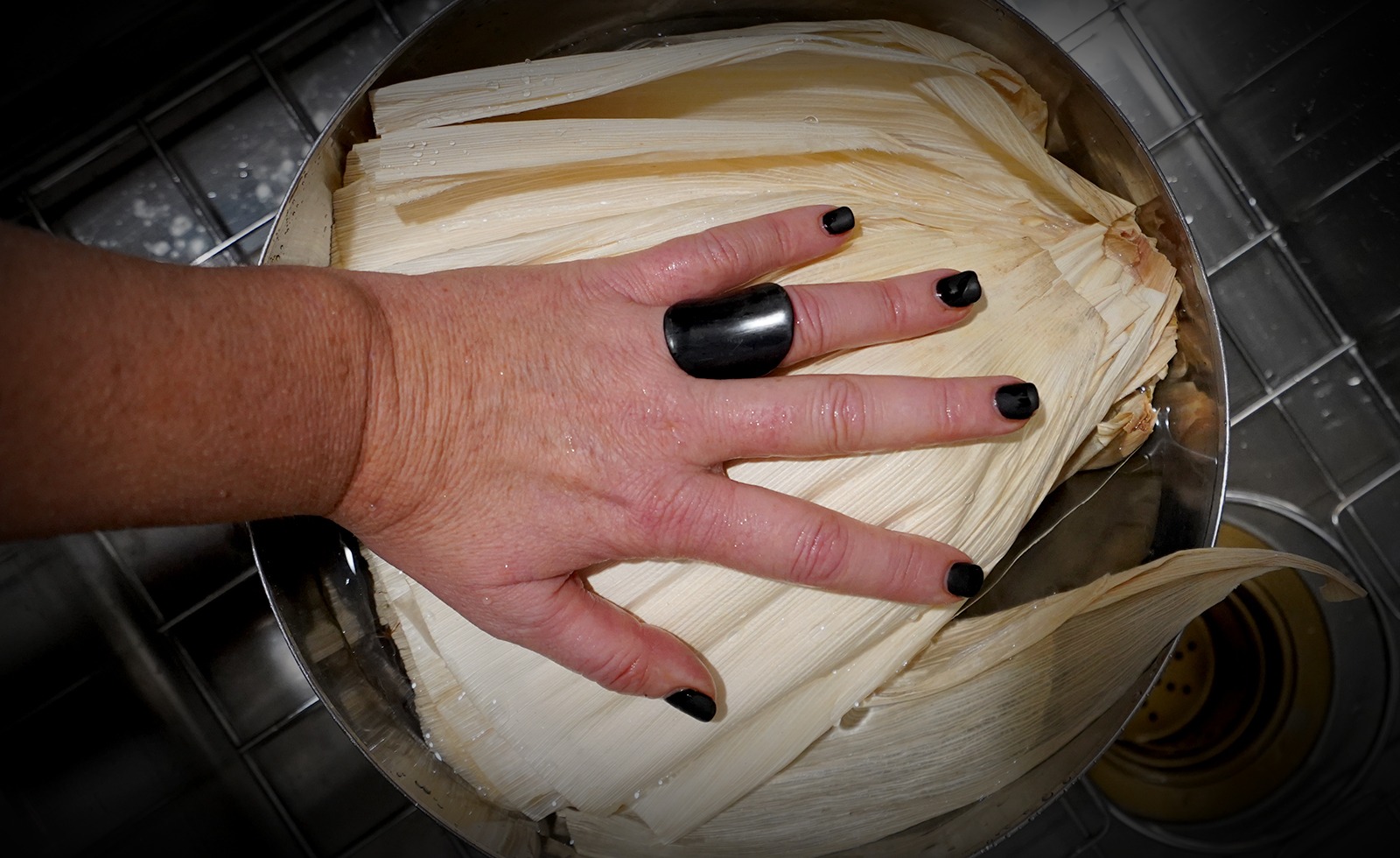
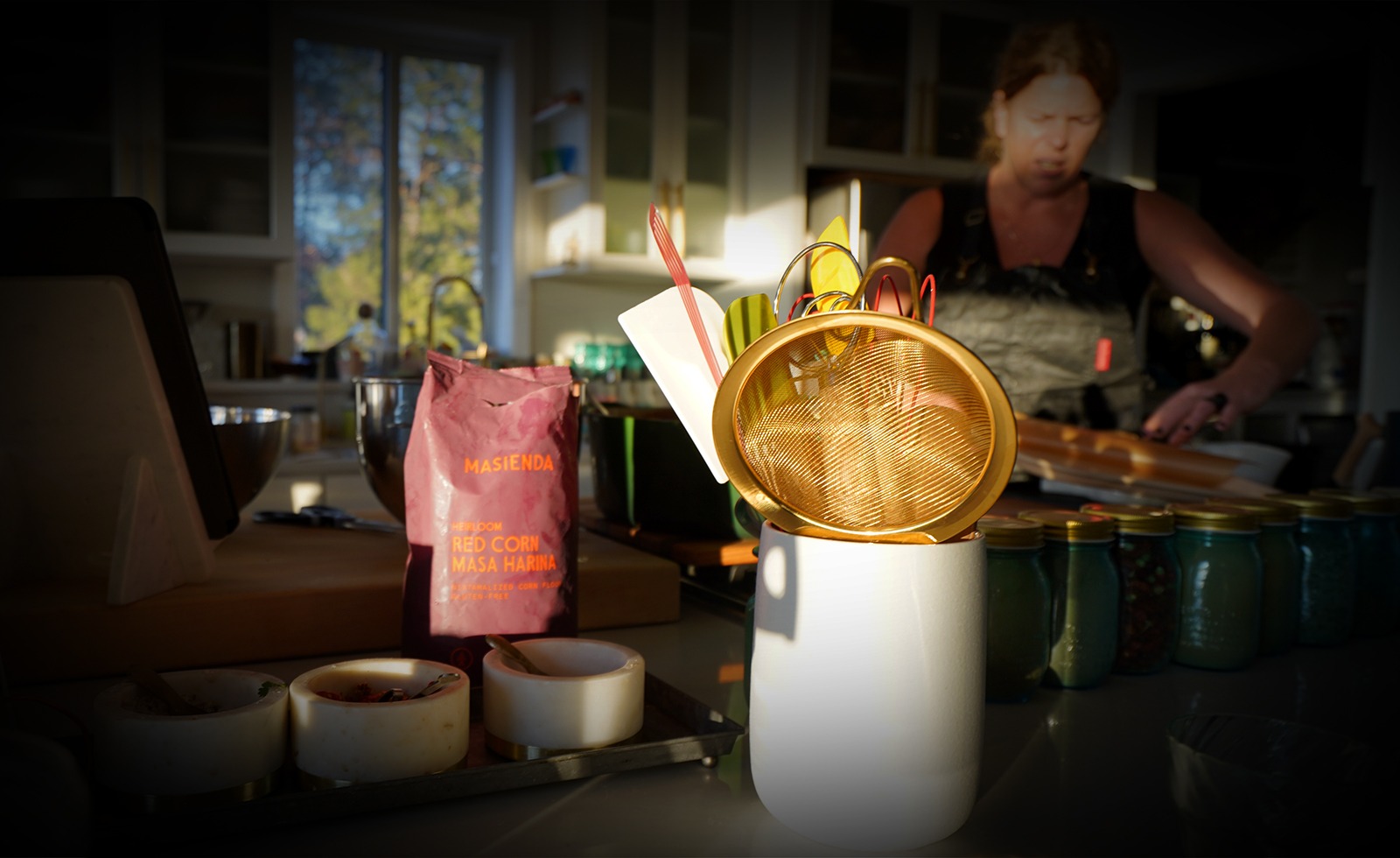
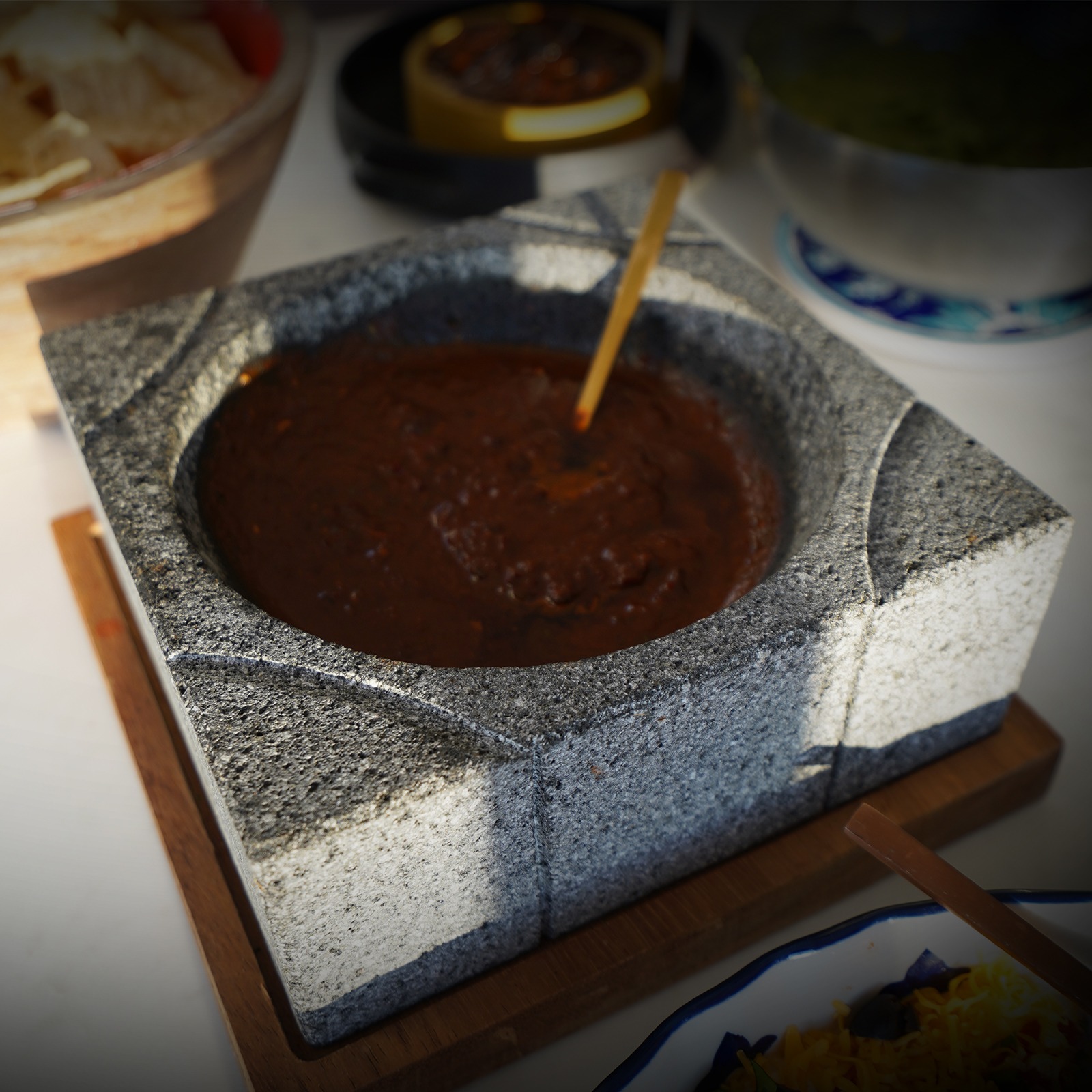
Spicy Guajillo Mole Hot Sauce
Makes 1 cup of hot sauce
Guajillo chilies have a complex earthy and smokey flavor that make them excellent for sauces. This recipe is a concept I have been using for a long time where I take part of the mole sauce and combine it with more dried chilies, spices, and coffee to make a rich, decedent fiery hot sauce.
Ingredients
4 dried guajillo peppers
1 dried mora chipotle chili
¼ cup strong, hot black coffee
½ cup Mango Pork Mole Sauce (Reserved), hot
2 cloves garlic
1/3 cup chopped white onions
½ teaspoon cumin powder
½ teaspoon garlic powder
½ teaspoon smoked paprika
½ teaspoon smoked salt
3 teaspoons salt
¼ cup cilantro leaves
1 tablespoon Mexican oregano leaves
1 cup chopped tomatoes
Juice of 3 limes
Directions
Chop up the dried chilies and soak them in the hot coffee and pork mole for about 3 minutes. Remove the soaked chili pieces and place them in a large molcajete along with the garlic and onions, and grind them up into a paste. Add the spice and the herbs and grind them into the mixture. Add the tomatoes and crush and pound into a salsa of desired thickness. Add lime juice and mix up. Let sit for about 10 minutes before serving.




